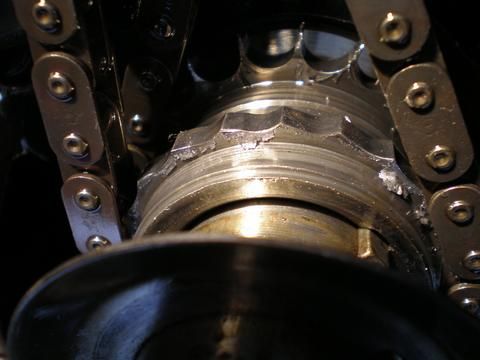IMO 89mm is pushing the envelope. If you just want reliable, stick with 87 or smaller. That said, I plan to use 89 next time for that little extra 'grunt', along with a hot cam, 4-2-1 exhaust and so on.
According to the book, the difference between new and "wear limit" on the cam bearings is only .002" or so. You can't see that by eye. So either measure, just replace, or assume they are OK.
Lightening the lifters isn't going to help anything if you stick with the stock redline, and may weaken them. IMO you should stick with stock pattern lifters, but make sure they are hard enough. I'm not sure if it is still a problem today, but a few years back almost all of the lifters on the market were inconsistently hard. The smart setup was to 100% test new ones for hardness.
Should be no problem on the stand.
I've always reused rod & main bolts (after inspecting them for damage and distortion of course), never had a problem. But again, it depends on what you are going to do with the motor afterwards. If you're planning on turning 7000 rpm on the track, then ARP bolts are cheap insurance.
Likewise, I reuse the clutch if it looks good. The friction plate can be relined at significantly lower cost (and better reliability IMO) than new if necessary. I've never had a pressure plate that failed, even after almost 300,000 miles. (However, I did switch when I installed the alloy flywheel, because it wasn't drilled for the TR3 pressure plate.)
Obviously, my approach is a little different than most people on this forum. Far too often, brand new parts are defective (too weak, wrong materials, wrong size, etc.), while usually I know the old parts have served well for many years. If they are not worn close to the limits or otherwise damaged, I tend to reuse them. We've had long discussions (mostly on the Team.Net list) about defective parts, and IMO it would really suck to have a motor trashed because some stupid new part was wrong.
This photo is of a buddy's Stag motor, with only some 7000 miles on the rebuild. He was not a happy camper!
What I don't have are photos of the new clutches that have broken, fuel pumps that came apart and took out the camshaft, oil pumps where the rotor slipped on the shaft (starving the bearings), etc. But I have heard the stories!

 Hey there Guest!
Hey there Guest!
 smilie in place of the real @
smilie in place of the real @
 Pretty Please - add it to our Events forum(s) and add to the calendar! >>
Pretty Please - add it to our Events forum(s) and add to the calendar! >> 



 A friendly reminder - be careful what links you click on here. If a link is posted by someone you don't know, or the URL looks fishy, DON'T CLICK. Spammers sometimes post links that lead to sites that can infect your computer, so be mindful what you click.
A friendly reminder - be careful what links you click on here. If a link is posted by someone you don't know, or the URL looks fishy, DON'T CLICK. Spammers sometimes post links that lead to sites that can infect your computer, so be mindful what you click.